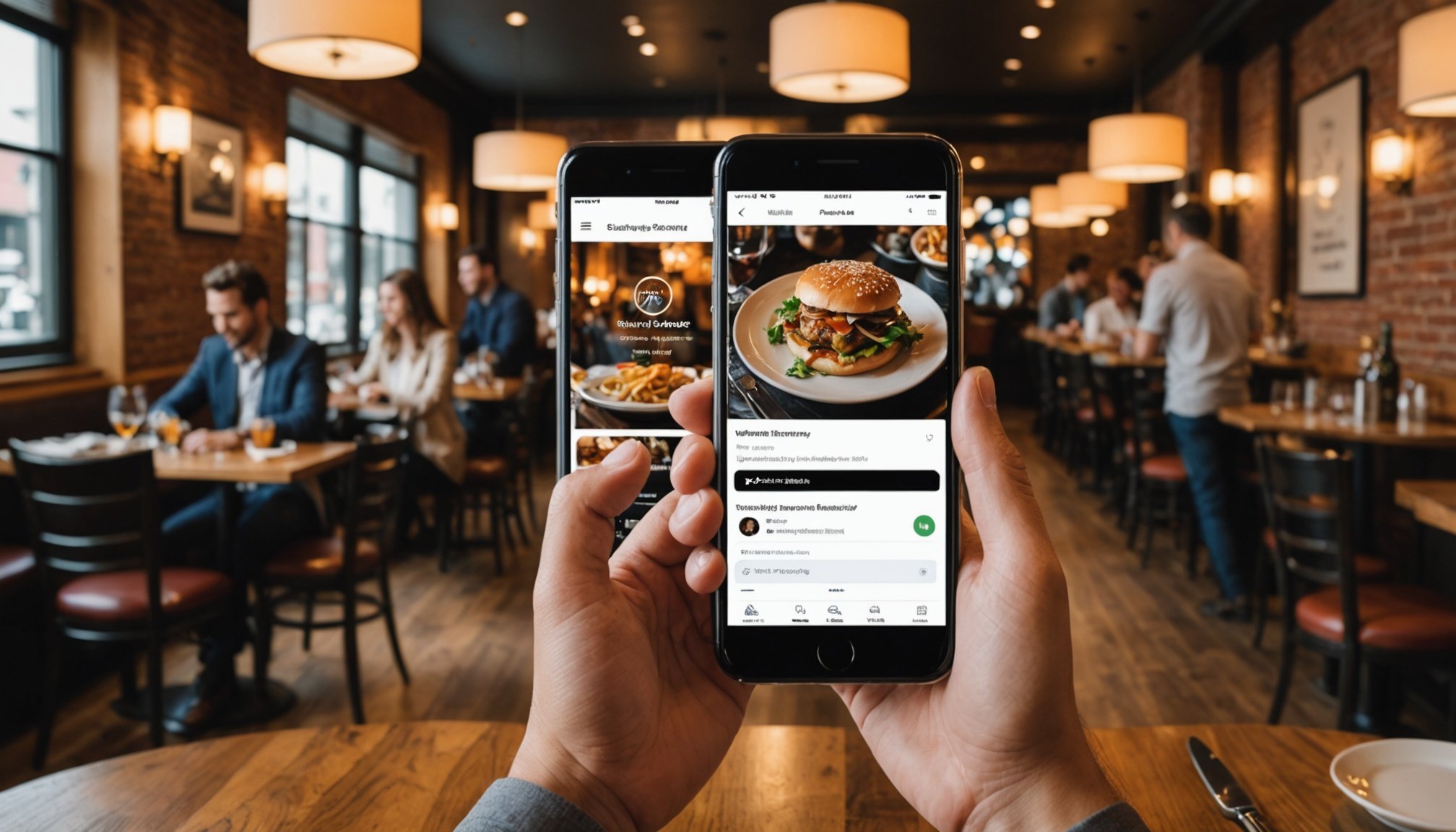Revolutionizing Restaurant Service: Balancing Customer Data Personalization with Privacy for Unforgettable Dining Experiences
In the ever-evolving restaurant industry, the quest for delivering exceptional dining experiences has led to a significant focus on personalization and data-driven strategies. However, this pursuit must be balanced with the critical need to protect customer privacy. Here’s a deep dive into how restaurants can achieve this delicate balance, ensuring that every dining experience is both personalized and secure.
The Importance of Personalization in the Restaurant Industry
Personalization is no longer a luxury but a necessity in the restaurant industry. Customers expect to be treated as individuals, with experiences tailored to their preferences and habits. Here are some key reasons why personalization is crucial:
Also to read : Keep Your Ice Cream Fresh: Pro Secrets to Stop Freezer Burn at Your Dessert Bar
Enhanced Customer Satisfaction
Personalized interactions make 80% of customers more likely to return to a restaurant[3]. When customers feel that their preferences are understood and respected, they are more likely to have a positive dining experience. For instance, addressing customers by their names and suggesting menu items based on their past orders can significantly enhance customer satisfaction.
Data-Driven Decisions
Restaurants can leverage guest data to make smarter business decisions. By analyzing customer preferences, purchasing behaviors, and trends, restaurants can optimize their menus, manage costs, and improve operational efficiency. For example, using powerful Guest Data Platforms and analytics solutions, restaurants can gain insights into menu performance and drive profitable sales[2].
Also read : Elevate Your Restaurant Ambiance: Innovative Indoor Plant Decor Ideas
Building Customer Loyalty
Personalization is a key driver of customer loyalty. When customers feel valued and understood, they are more likely to become loyal patrons. Loyalty programs that offer personalized rewards and exclusive offers can further strengthen this bond. According to experts, using customer data to deliver personalized experiences is essential for building strong direct relationships with customers and driving sustainable growth[2].
Balancing Personalization with Data Privacy
While personalization is essential, it must be balanced with the growing importance of data privacy. Here’s how restaurants can navigate this complex landscape:
Transparency and Empowerment
Transparency is paramount when it comes to handling customer data. Restaurants must clearly communicate how customer data is collected and used. Customers should be empowered to control their shared information, with options to opt-out or modify their data preferences. As Priyanka Swamy, CEO of Perfect Locks LLC, emphasizes, “Make it clear when AI is used and ensure customers know why. Implementing strong data security measures is a no-brainer, ensuring your customer’s data is handled with the highest level of protection”[1].
Regulatory Compliance
Restaurants must adhere to stringent privacy regulations such as the European Union’s General Data Protection Regulation (GDPR). This involves investing in robust security measures like multi-factor authentication and single sign-on (SSO) to prevent data breaches. With Gartner predicting that 75% of the world’s population will be covered under modern privacy laws, compliance is not just a legal requirement but a business imperative[1].
Secure Data Management
Adaptable POS systems play a crucial role in safeguarding sensitive customer data while ensuring compliance with changing laws. These systems must offer robust encryption, tokenization, and proactive threat detection to protect against breaches. For example, Toast POS ensures that personal information is collected and managed securely, with clear guidelines on how data is shared with merchants and third-party partners[5].
Leveraging Technology to Enhance Personalization and Privacy
Technology is a double-edged sword in the restaurant industry; it can either enhance or detract from the dining experience. Here’s how restaurants can use technology to strike the right balance:
AI-Powered Personalization
AI algorithms can understand individual preferences and suggest destinations, accommodations, and experiences that align with customers’ unique tastes. In the restaurant industry, AI can streamline back-end processes like inventory management and predictive analytics, freeing up staff to focus on creating memorable interactions. For instance, AI-driven personalization can provide real-time recommendations based on customer order history and preferences[1][4].
Integrated Technology Solutions
The proliferation of technology in restaurants has led to vendor and technology consolidation. Restaurants need streamlined, integrated platforms that solve technical problems without overwhelming employees. By adopting fewer, smarter solutions, restaurants can focus on what they do best: creating memorable guest experiences. As Noah Glass, CEO of Olo, notes, “The winners will focus on technologies that solve real operational challenges and improve the guest experience, ensuring a clear return on investment”[2].
Practical Strategies for Restaurants
Here are some practical strategies restaurants can implement to balance personalization with privacy:
Collecting and Using Customer Data Effectively
- Collect Basic Information: Collect customer contact information such as names, phone numbers, and email addresses. This can be done through sign-up forms on the website or at the register[3].
- Use CRM Software: Utilize customer relationship management (CRM) software to manage and analyze customer data. This helps in sending personalized offers and updates to customers.
- Train Staff: Train staff to use customer data effectively, such as addressing customers by their names and suggesting menu items based on past orders.
Implementing Secure Data Practices
- Transparent Communication: Clearly communicate to customers how their data is collected and used.
- Robust Security Measures: Invest in robust security measures like multi-factor authentication and single sign-on (SSO) to prevent data breaches.
- Compliance with Regulations: Ensure adherence to privacy regulations such as GDPR and PCI DSS updates.
Offering Flexible and Personalized Services
- Flexible Reservation Options: Provide multiple booking channels like mobile app reservations, phone bookings, and online table selection to cater to different customer preferences[3].
- Personalized Recommendations: Use AI to provide real-time recommendations based on customer order history and preferences.
- Loyalty Programs: Implement loyalty programs that offer personalized rewards and exclusive offers to build customer loyalty.
Examples of Successful Implementation
Several restaurants and technology providers are already successfully balancing personalization with privacy. Here are a few examples:
Olo’s Integrated Solutions
Olo’s platform integrates various technologies to streamline operations and enhance the guest experience. By focusing on technologies that solve real operational challenges, Olo helps restaurants improve their service standards without compromising on personal touch[2].
Toast POS’s Secure Data Management
Toast POS ensures that personal information is collected and managed securely. Their system provides robust encryption, tokenization, and proactive threat detection to protect against breaches, while also offering personalized experiences through data analytics and profiling technology[5].
Pantheon Tickets’ AI-Powered Recommendations
Pantheon Tickets uses AI algorithms to provide real-time, tailored travel recommendations. This approach can be applied in the restaurant industry as well, where AI can suggest menu items and experiences based on individual preferences, enhancing the customer experience and simplifying decision-making[1].
In the restaurant industry, personalization and data privacy are not mutually exclusive; they are complementary aspects of delivering exceptional dining experiences. By leveraging technology thoughtfully, ensuring transparency and empowerment, and adhering to regulatory compliance, restaurants can create personalized and secure experiences that drive customer satisfaction and loyalty.
As Matteo Valentini, CEO of Pantheon Tickets, aptly puts it, “Maintaining customer trust in an automated service landscape requires a delicate balance between technology and human empathy. Transparency in how AI tools use customer data and ensuring human customer service is available when needed are critical”[1].
In 2025 and beyond, the restaurant industry will continue to evolve, with data becoming the driving force behind profitable and personalized dining experiences. By embracing this evolution while respecting customer privacy, restaurants can ensure that every dining experience is not just memorable but also secure and personalized.
Table: Comparing Key Strategies for Balancing Personalization and Privacy
| Strategy | Description | Benefits | Challenges |
|---|---|---|---|
| Transparent Communication | Clearly communicate how customer data is collected and used. | Builds trust, ensures compliance. | Requires ongoing effort to maintain transparency. |
| Robust Security Measures | Invest in multi-factor authentication, SSO, and encryption. | Protects against data breaches, ensures compliance. | Can be costly, requires regular updates. |
| AI-Powered Personalization | Use AI to provide real-time recommendations based on customer data. | Enhances customer experience, simplifies decision-making. | Requires significant data collection, potential privacy concerns. |
| Integrated Technology Solutions | Adopt streamlined, integrated platforms to solve technical problems. | Improves operational efficiency, reduces employee fatigue. | Requires initial investment, potential integration challenges. |
| Flexible and Personalized Services | Offer multiple booking channels and personalized recommendations. | Caters to different customer preferences, enhances customer satisfaction. | Requires ongoing data analysis and staff training. |
| Loyalty Programs | Implement programs that offer personalized rewards and exclusive offers. | Builds customer loyalty, drives repeat business. | Requires ongoing engagement and data management. |
Detailed Bullet Point List: Steps to Implement Personalized and Secure Dining Experiences
-
Collect Customer Information:
-
Use sign-up forms on the website or at the register.
-
Utilize CRM software to manage and analyze customer data.
-
Collect basic information such as names, phone numbers, and email addresses.
-
Implement Secure Data Practices:
-
Clearly communicate to customers how their data is collected and used.
-
Invest in robust security measures like multi-factor authentication and SSO.
-
Ensure adherence to privacy regulations such as GDPR and PCI DSS updates.
-
Use AI for Personalization:
-
Use AI algorithms to provide real-time recommendations based on customer order history and preferences.
-
Streamline back-end processes like inventory management and predictive analytics.
-
Offer Flexible and Personalized Services:
-
Provide multiple booking channels like mobile app reservations, phone bookings, and online table selection.
-
Train staff to use customer data effectively, such as addressing customers by their names and suggesting menu items based on past orders.
-
Implement Loyalty Programs:
-
Offer personalized rewards and exclusive offers to build customer loyalty.
-
Use data analytics to personalize loyalty programs and ensure they are relevant to each customer.
By following these strategies and steps, restaurants can create a balanced approach that enhances the dining experience while respecting customer privacy, setting them up for success in the evolving landscape of the restaurant industry.











